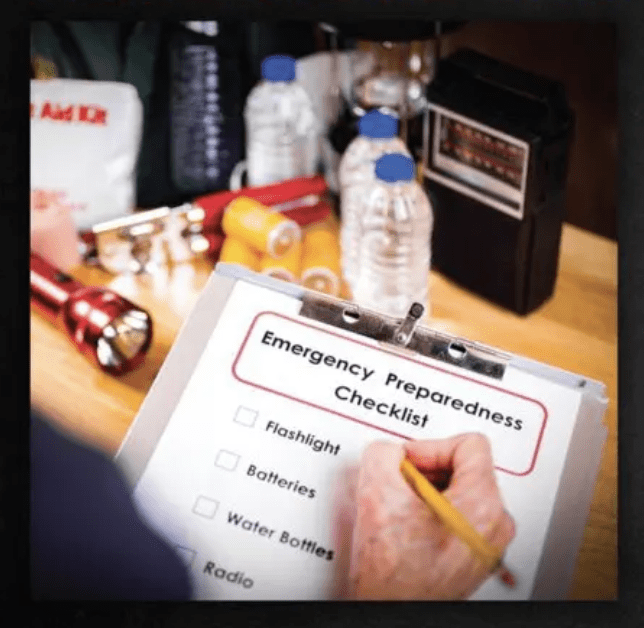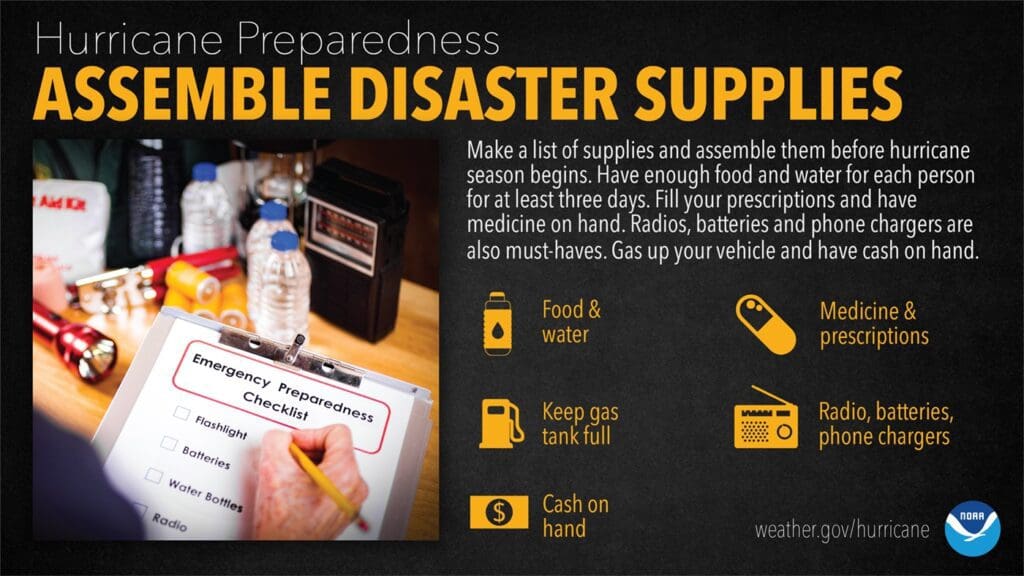Search Posts
Recent Posts
- Rhode Island Legislature Highlights Accomplishments for the 2025 Session June 25, 2025
- Sports in RI: Cody Tow, Volleyball Past, Present and Into His Future – John Cardullo June 25, 2025
- Need a Break? Time for Sour Grapes – Tim Jones June 25, 2025
- Rhode Island Weather Forecast for June 25, 2025 – Jack Donnelly June 25, 2025
- It is what it is: Commentary on 6.25.25 with Jen Brien June 25, 2025
Categories
Subscribe!
Thanks for subscribing! Please check your email for further instructions.

RI Hurricane Preparedness Week. Day 3: Disaster Supplies
The National Weather Service (NWS) Boston, MA has declared July 10th through July 14th as Hurricane Preparedness Week. Each day this week we will highlight a different preparedness topic.
Each day this week we are featuring a different way for you to prepare. Day 3 is Disaster Supplies.
The storm tide, inundation, can arrive several hours ahead of the tropical cyclone eye, potentially resulting in the closure of evacuation routes for an area. Even if the decision to leave is made, it may no longer be possible to do so. Do not wait to leave if asked to evacuate.
Be prepared to be self-sufficient for at least three days up to one week. This means having enough food, water and medicines for all members of your family. If you have pets, do not forget their needs as well.
A hurricane strike in southern New England will disrupt normal activities. There is the possibility for many roads to be closed due to flooding, fallen trees or debris. Until the water recedes, or the debris removed, it may not be possible to travel. That means no trips to the grocery or convenience store, or restaurants for food or drink. This also means emergency services, such as police, fire and ambulance, may also be interrupted.
Electric and telephone services may be unavailable for days, including cellular phones. Prior to the start of hurricane season, it is a good idea to establish a common contact well away from the east or south coasts. As the storm approaches, you can contact that person to inform them that you have moved to a safe shelter. Family and friends should know to contact that person to find out about your well-being.
Putting together a disaster preparedness kit can be very expensive if done all at once. Try building your it slowly, by purchasing one or two items per week.
A basic kit should contain at least,
- One gallon of water per person per day for drinking and sanitation
- Non-perishable food and a manual can opener
- Battery powered or hand crank radio and a NOAA All-Hazards weather radio – include extra batteries for each
- Flashlights or lamps – include extra batteries
- First aid kit
- Extra glasses and any medicines
- A whistle to signal for help
- A wrench or pliers to turn off utilities
- Moist towelettes, garbage bags and plastic ties for sanitation
- Local maps
Do not use candles or an open flame as a source of light after a major storm. Fire services will likely be disrupted, and a small fire could get out of hand quickly. If there happens to be a natural gas leak nearby or some kind of fuel in flood waters, a bad situation could be made much worse.
Stay away from downed power lines. There is no advance notice when power could return to the lines. Or, someone on the street could have hooked up their portable generator improperly.
For more suggestions on what should go into a disaster kit, please visit www.ready.gov/america/getakit. You could also visit the website of your states emergency management agency or office of public safety.
For more information concerning evacuation plans for hurricanes, please visit the website of your states emergency management agency or office of public safety. Other sources would be local emergency management officials and FEMA.
For more information on the new storm surge watches and warnings please visit www.nhc.noaa.gov

